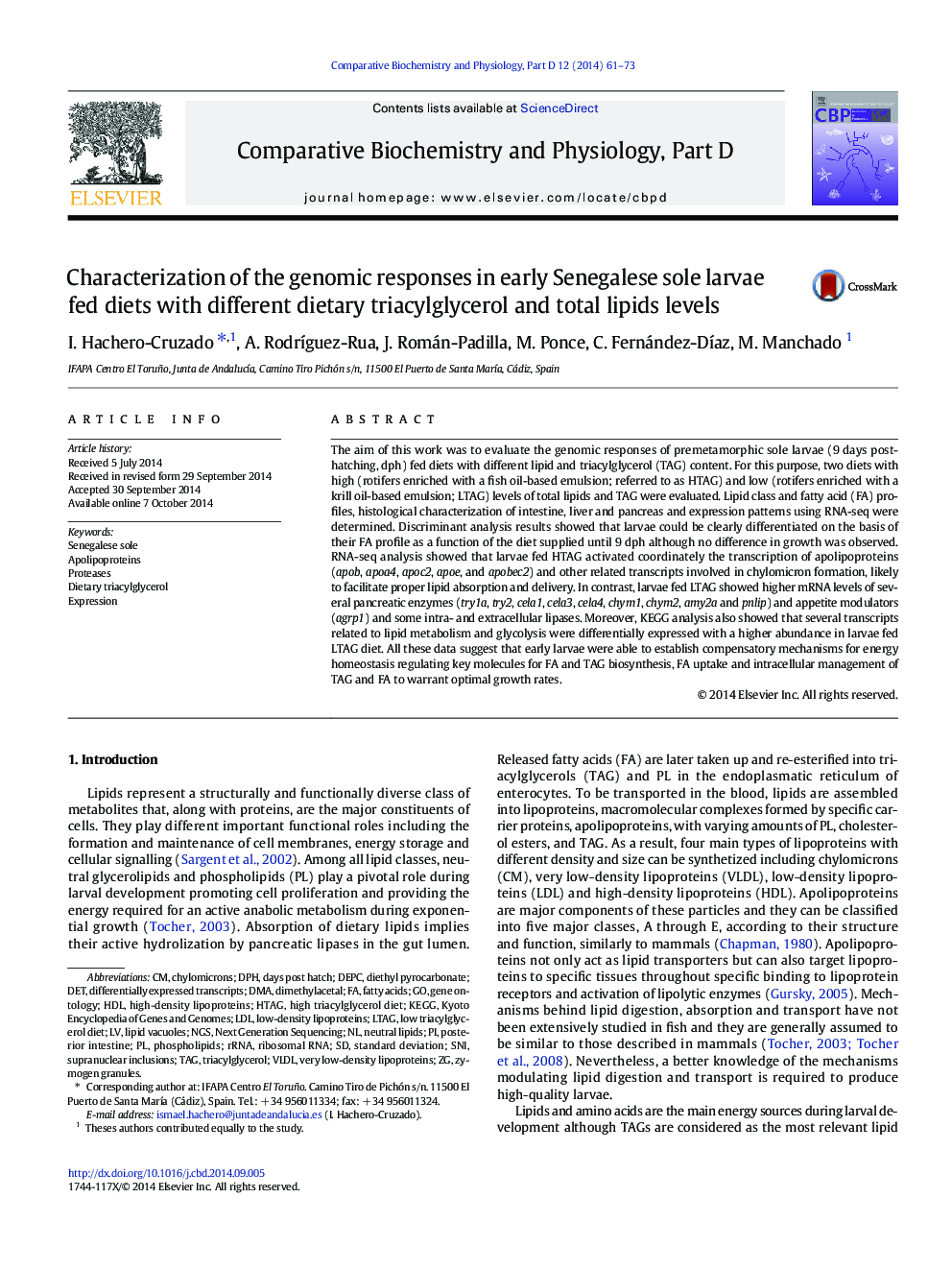| Article ID | Journal | Published Year | Pages | File Type |
|---|---|---|---|---|
| 1978543 | Comparative Biochemistry and Physiology Part D: Genomics and Proteomics | 2014 | 13 Pages |
The aim of this work was to evaluate the genomic responses of premetamorphic sole larvae (9 days post-hatching, dph) fed diets with different lipid and triacylglycerol (TAG) content. For this purpose, two diets with high (rotifers enriched with a fish oil-based emulsion; referred to as HTAG) and low (rotifers enriched with a krill oil-based emulsion; LTAG) levels of total lipids and TAG were evaluated. Lipid class and fatty acid (FA) profiles, histological characterization of intestine, liver and pancreas and expression patterns using RNA-seq were determined. Discriminant analysis results showed that larvae could be clearly differentiated on the basis of their FA profile as a function of the diet supplied until 9 dph although no difference in growth was observed. RNA-seq analysis showed that larvae fed HTAG activated coordinately the transcription of apolipoproteins (apob, apoa4, apoc2, apoe, and apobec2) and other related transcripts involved in chylomicron formation, likely to facilitate proper lipid absorption and delivery. In contrast, larvae fed LTAG showed higher mRNA levels of several pancreatic enzymes (try1a, try2, cela1, cela3, cela4, chym1, chym2, amy2a and pnlip) and appetite modulators (agrp1) and some intra- and extracellular lipases. Moreover, KEGG analysis also showed that several transcripts related to lipid metabolism and glycolysis were differentially expressed with a higher abundance in larvae fed LTAG diet. All these data suggest that early larvae were able to establish compensatory mechanisms for energy homeostasis regulating key molecules for FA and TAG biosynthesis, FA uptake and intracellular management of TAG and FA to warrant optimal growth rates.
